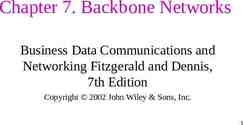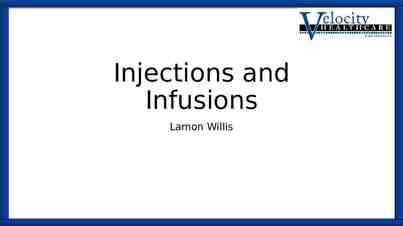What is PESH? 1
54 Slides1.86 MB
What is PESH? 1
PESH The Public Employee Safety and Health Act Article 2, Section 27a, NYS Labor Law Effective January 1, 1980 2
The Public Employee Safety and Health Bureau Enforces the provisions of the PESH Act and the safety and health standards promulgated under the Act Provides consultation services to Public Employers Provides educational and consultation services to Employee Organizations 3
THE PESH BUREAU 60 Inspectors and Hygienists 9 District Offices 4
DISTRICT OFFICES New York City Garden City White Plains 212-621-0773 516-228-3970 914-997-9514 5
DISTRICT OFFICES Albany Utica Binghamton Syracuse Rochester Buffalo 518-457-5508 315-793-2258 607-721-8211 315-479-3212 585-258-4570 716-847-7133 6
THE PESH ACT Definitions Employer: The state, any political subdivision of the state; a public authority or any other governmental agency or instrumentality thereof 7
Definitions Employees; Means any person permitted to work by an employer 8
Definitions Authorized Employee Representative; An employee authorized by the employees or the designated representative of an employee organization recognized or certified to represent employees pursuant to Article 14 of the Civil Service Law 9
What does PESH cover? 10
SAFETY AND HEALTH STANDARDS The Act directs the Commissioner of Labor to adopt by rule and regulation all federal OSHA standards and apply them to places of public employment 11
ADMINISTRATIVE RULES Part 801: Recording and Reporting Public Employees’ Occupational Injuries and Illnesses Part 802: Inspection of Places Of Public Employment Part 803: Variance Regulations Part 804: Petition For Modification Of Abatement Date (PMA) 12
Administrative Rules Part 805: Petition for Employee Contest Of Abatement Period 13
What do I do if I have a safety or health issue in my workplace? 14
What is PESH’s Game Plan? 15
INSPECTION PROCEDURES Administrative Plan: Programmed Inspections Each Inspector assigned a geographical area Moves through that area on a door to door basis inspecting high hazard workplaces Expected 9 year cycle 16
How does a PESH inspection work? 17
INSPECTION PROCEDURES The Act and Part 802 call for a structured inspection: No Advanced Notice Opening Conference Union Participation Walk Around Inspection Closing Conference 18
What brings PESH to my workplace? 19
TYPES AND PRIORITY OF INSPECTIONS Imminent Danger Accident Investigations Complaints (Serious Hazard Alleged) Complaints (Non serious Hazard Alleged) Referrals Follow up Inspections Programmed Inspections 20
Imminent Danger A condition which is likely to cause death or serious physical injury or illness Advance notice given to employer Inspection commenced immediately PESH has authority to stop the work under Section 200 Of the Labor Law 21
Accident Investigations Any incident which is fatal to one employee or results in hospitalization of two or more employees Employer must report incident to PESH within 8 hours PESH may inspect incidents which injures only one employee if assets are available 22
Complaints Must be in writing and must be signed Complainant may request that name be with held Must allege a hazard PESH investigates every complaint Employer is provided with a copy of the complaint at the opening conference 23
COMPLAINTS Complaints are reviewed and prioritized based upon the hazard to employees. The higher the hazard the higher the priority Complainant may be asked to provide additional information prior to inspection 24
Referrals Hazards identified in the news media Referrals from another agency Referrals from another discipline 25
Follow Up Inspections Conducted to verify compliance after all abatement dates have passed Penalties are issued for uncorrected violations Generally limited in scope 26
PROGRAMMED INSPECTIONS Conducted with the least burden to the employer BUT the employer does have to facilitate the inspection Comprehensive in scope 27
Hazardous Waste Operations and Emergency Response 29CFR1910.120 Written Program Training Records Qualification of Trainers Refresher Training Documentation HAZMAT Team Members: Baseline Physical Examination Surveillance (f) Training 28
Personal Protective Equipment 29CFR1910.132 Written Hazard Assessment (Certified) Written Training Certification 29
30
Respiratory Protection1910.134 Written Respiratory Protection Program Selection Medical Evaluation Fit Testing Proper use, cleaning, disinfection, storage, inspection, repair and maintenance Breathing Air Quality Annual Training Program Evaluation 31
Confined Space 29CFR1910.146 Evaluate Workplace Inform of Location and Hazards Prevent Entry Written PRCS Entry Plan 32
The Control of Hazardous Energy (LOTO) 29CFR1910.147 Safe Electrical Work Practices (1910.331-399) Written Procedures Training Periodic Inspections 33
Portable Fire Extinguishers 29CFR1910.157 Inspection, Maintenance and Testing Hydrostatic Testing Annual Training 34
Bloodborne Pathogens-1910.1030 Written Exposure Control Plan Exposure Determination Universal Precautions, Engineering Controls, PPE, Housekeeping Hepatitis B Vaccination/Declination Post-Exposure Evaluation and Follow-up Documentation Package for Healthcare Provider Labels and Signs Annual Training and Program Evaluation Recordkeeping 35
Hazard Communication Right to Know 29 CFR 1910.1200 Written Program Inventory Material Safety Data Sheets (MSDS) Labeling Training Exposure Record Poster 36
Hazardous Chemicals in Laboratories – 1910.1450 Limit Exposure to PELs Chemical Hygiene Plan (App A – National Research Council Recommendations) Training Hazard ID – Maintain Labels & MSDS 37
Recording and Reporting Public Employees’ Occupational Injuries and Illnesses PESH Form SH-900– Log of WorkRelated Injuries and Illnesses PESH Form SH-900.2 – Injury and Illness Incident Report PESH Form SH-900.1 – Summary of Work-Related Injuries and Illnesses 38
Other issues that may be addressed during an inspection: Emergency Action Plan for Fire and other emergencies Fire Prevention Plan Rabies Lyme Disease 39
Walk around of the facility Including but not limited to: Exits Electrical Housekeeping Overhead Storage Machine Guarding Welding Eye Wash (corrosives) 40
Walk around (Cont.) Ladders Fuel Dispensing Stairs Compressed Gases Sanitation 41
What happens after an inspector leaves my workplace? 42
Discrimination The employer may take no adverse action against an employee because: He or She filed a complaint Participated in the inspection Gave statements to the inspector Exercised any other right provided for in the Act 43
Discrimination Complaints must be made within 30 days of the adverse action The PESH Bureau will investigate and provide finding within 90 days If discrimination is found the case is sent to the AG for prosecution 44
Consultation Consultation is provided free of charge to employer who would like to voluntarily come into compliance Limited or full service consultation services are available Service is provided upon the employers request 45
Consultation The consultation is conducted in the same structured format as an inspection Consultant must be allowed to interview employees Employee representative participation is strongly encouraged 46
Consultation The employer must agree to correct any serious hazards identified by the consultant by an agreed upon date. The Employer must certify to PESH that the serious hazards have been removed 47
Services to Employees Speakers Model programs Educational programs Seminars Lending library 48
PESH’s Strategic Plan GPRA- 1993 Requires Strategic Plan Strategic Goals Identified Performance Goals Specified Highway/Construction (SIC 1611) Fire /Ambulance (9224) Nursing Homes (805) Performance Indicators Injury Rates From SH 900 49
SIC 1611 Highway/Construction Injury Rate Reduction 1995- (Baseline Year) 14.4 1999- 11.7 2000- 11.0 2001- 10.8 2002- 12.2 Total Reduction 15% 50
Nursing Homes Results of Phase I 1998 (Baseline) 1999 16.1 2000 14.2 2001 12.7 2002 14.3 2003 16.6 16.6 (3.0%) (14.5%) (23.5%) (14.5%) (0%) 51
Those Nursing Homes Requesting Consultations 1998 1999 2000 2001 2002 2003 19.95 22.07 17.27 12.42 14.23 16.21 (-10.63%) (13.42%) (37.71%) (28.65%) (18.72%) 52
SIC 9224 Fire/ Ambulance Injury Reduction 19971999200020012002- (Baseline Year) # Injuries 9,283 8,187 injuries (11.8% reduction) 5,886 injuries (36.6% reduction) 7,156 injuries (22.9% reduction) 7,607 injuries (18.1 % reduction) 53
Use PESH as a resource ! 54



























































